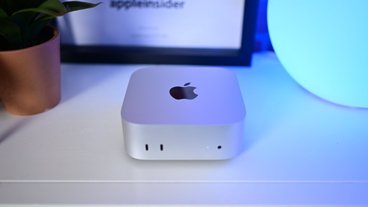Cocoa-based Finder
People familiar with matter say the Finder, which currently stands as one of the oldest Carbon-based applications in the Mac OS portfolio, has been completely re-written in the company's native object-oriented application program environment called Cocoa.
Apple has reportedly tapped select members of its developer community to begin testing the updated graphical file system manager as part of a new pre-release copy of Snow Leopard belonging to the build train 10Axxx. In addition, many of the Apple-authored applications accompany the new build are also said to have been wrapped completely in Cocoa.
Microsoft Exchange Support
Other advances are also present in the new test software, such as broader support for Microsoft Exchange 2007 in Snow Leopard's versions of iCal, Address Book and Mail. The implementation of Exchange support remains a work in progress, according to those familiar with the matter. As such, Apple has reportedly asked that developers focus their testing efforts on a subset of Exchange capabilities, such as scheduling events in iCal, adding contacts to Address Book 5.0, and automated account configuration in Mail.
ImageBoot
When it makes its debut, likely at WWDC 2009, Snow Leopard will also introduce a new, third option for disc image-based installation called ImageBoot. Based on Apple's existing NetBoot technology, which allows Macs to boot from a remote disk over the network, ImageBoot will allow users to set up any number of disk images on a secondary partition or external drive, and then selectively boot their system from any one of those disk images at startup.
This new feature will allow users to set up a series of test environments or uniquely configured Mac OS X systems, store the bootable systems as discrete disk images, and subsequently store multiple boot targets on the same disk or partition. Currently, only one bootable Mac OS X installation can be stored on a given disk partition.
With ImageBoot, multiple NetBoot sets can be maintained locally on the same storage partition, and the user can select any one of the disk images available to boot from without having to restore or mount the disk image first. The result is a system that works similar to virtualization software such as Parallels, which can create disk images for different PC operating systems and selectively boot from any of them. The difference is that Mac OS X isn't booting up in a virtual environment; it actually boots a fully native Mac OS X system.
Broader Availability Expected
A little over two weeks ago, AppleInsider noted that Apple was preparing to broaden evaluation of Snow Leopard through software seeds to a limited number of developers. It's now expected that the company's vast developer community, or members of the Apple Developer Connection network, could be added to the mix as early as this weekend.
In June, ArsTechnica's Jacqui Cheng cited sources who suggested that Apple might "eventually wrap everything in Cocoa" with the release of Snow Leopard.
 Kasper Jade
Kasper Jade






-m.jpg)






 Wesley Hilliard
Wesley Hilliard
 Malcolm Owen
Malcolm Owen
 Andrew Orr
Andrew Orr
 William Gallagher
William Gallagher
 Sponsored Content
Sponsored Content
 Christine McKee
Christine McKee

 Thomas Sibilly
Thomas Sibilly







114 Comments
Aaah, I didn't know that the Finder was Carbon, so now that it is going to be in Cocoa, will it be faster?, hmm, iTunes 8 is half carbon half cocoa rite?
For a major release that was promised to not have many new features Snow Leopard is turning out to be feature packed. The Finder re-write has been asked for since practically day one of OSX's release.
I'm still holding hope that it will be a free update for Leopard users.
ImageBoot
When it makes its debut next spring, Snow Leopard will also introduce a third option for disc image-based installation called ImageBoot. Based on Apple's local NetBoot technology, the method will let users boot a Mac simply by placing and launching a disc image on any storage partition outside of the primary partition for which they wish to install copies of Mac OS X.
People familiar with the matter say the technology works through a series of scripts that will convert the disc images to a NetBoot set capable of performing the local install. This will allow users and administrators to share their external drives and partitions with data not associated with their development or testing procedures, those people say.
Well, Mike Bombich does work at Apple now, so maybe this is an offshoot of NetRestore.
Null.
For a major release that was promised to not have many new features Snow Leopard is turning out to be feature packed. The Finder re-write has been asked for since practically day one of OSX's release.
I'm still holding hope that it will be a free update for Leopard users.
You can almost bet on price. Probably the standard price to go from 10.4 to 10.5 to 10.6. Don't count on a discount!